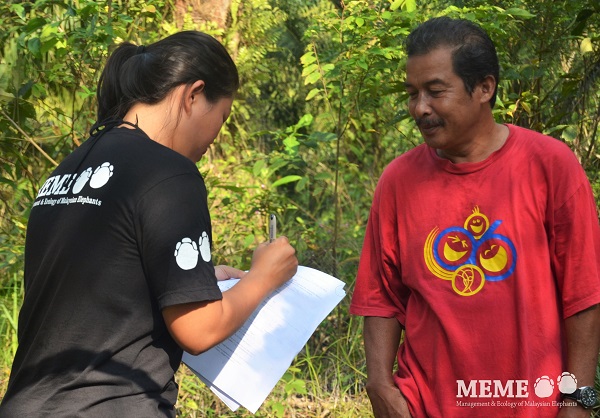
A survey of people living in Malaysia on their attitudes towards large animals like elephants and tigers has shown that more awareness and understanding is needed to reduce human-wildlife conflict.
Researchers from the University of Nottingham Malaysia from the School of Environmental & Geographical Sciences and School of Psychology, undertook the survey to examine the relationship between Malaysian attitudes and tolerance towards large animal species known as ‘Megafauna’ and the influence of urbanization, conservation awareness, local context (whether respondents were in the zoo or at shopping malls), taxonomic bias (species involved), and conflict severity.
Their results published in Global Ecology and Conservation (GECCO) suggest that awareness campaigns can promote positive attitudes towards wildlife in Malaysia and increase people’s tolerance to live in the same landscape with wildlife.
A total of 733 people were interviewed between June 2016 and December 2017 in three locations with different degrees of urbanization – the capital city, a small town and a rural area. Respondents showed a relatively good knowledge of local wildlife and conservation issues and thought wildlife conservation was mainly the responsibility of the government. People expressed more tolerance towards less conflict prone tapirs than towards potentially more dangerous elephants, and even less towards tigers.
The survival of conflict-prone megafauna species depends on people’s willingness to coexist with them. Many large wildlife species, such as elephants and large cats are globally declining. These animals have large home ranges and often their populations cannot be constrained to protected areas. For example, wild Asian elephants (Elephas maximus) in many range countries occur in non-protected human-occupied landscapes. While a separate study estimated globally, as many as 57 million people shared landscapes with wild tigers. Many of these wildlife species have relatively high ecological overlap with people, which means that when they share landscapes with people, human-wildlife conflict ensues in the form of direct (e.g. physical damage to people or wildlife) or indirect (e.g. damage to people’s crops, livestock, or livelihoods and different forms of disruptions to wildlife) costs for both sides.
Reducing human-wildlife conflict is complex and requires much more than simply reducing the amount of damage produced by wildlife, since often deeply rooted factors other than personal experience or perception of risk affect human responses towards conflicts with wildlife. It requires a deep understanding of human social dimensions, including understanding people’s attitudes towards wildlife and the factors affecting and shaping these attitudes.
Ange S.L. Tan, a Masters of Research graduate from University of Nottingham, the first author of the paper explains: “There were clear differences between the types of animals people would be tolerant towards. The animals that the general public perceived to be more dangerous were less likely to be tolerated and it is these animals that are in danger of receiving more aggressive responses when a conflict happens such as exterminating them or moving them away.” The authors believe people should be educated via targeted awareness campaigns to people in urban and rural settings. In urban settings, efforts should be made to enhance people’s sense of ownership and responsibility in conservation, while in rural areas efforts should focus on reducing the cost of conflict on people while promoting tolerance and willingness to coexist with conflict-prone megafauna.
The long-term survival of conflict-prone megafauna such as tigers and Asian elephants requires people’s tolerance and willingness to coexist with them. Understanding people’s attitudes can help design conservation interventions that are more effective and supported by various stakeholders.
-ends-
For media enquiries please contact: Josephine Dionisappu, PR and Communications Manager University of Nottingham Malaysia at josephine.dionisappu@nottingham.edu.my or Jane Icke, Media Relations Manager for the Faculty of Science at the University of Nottingham, on +44 (0)115 951 5751 or jane.icke@nottingham.ac.uk
Notes to editors: The University of Nottingham is a research-intensive university with a proud heritage, consistently ranked among the world's top 100. Studying at the University of Nottingham is a life-changing experience and we pride ourselves on unlocking the potential of our 44,000 students - Nottingham was named both Sports and International University of the Year in the 2019 Times and Sunday Times Good University Guide, was awarded gold in the TEF 2017 and features in the top 20 of all three major UK rankings. We have a pioneering spirit, expressed in the vision of our founder Sir Jesse Boot, which has seen us lead the way in establishing campuses in China and Malaysia - part of a globally connected network of education, research and industrial engagement. We are ranked eighth for research power in the UK according to REF 2014. We have six beacons of research excellence helping to transform lives and change the world; we are also a major employer and industry partner - locally and globally.
Posted on 4th September 2020